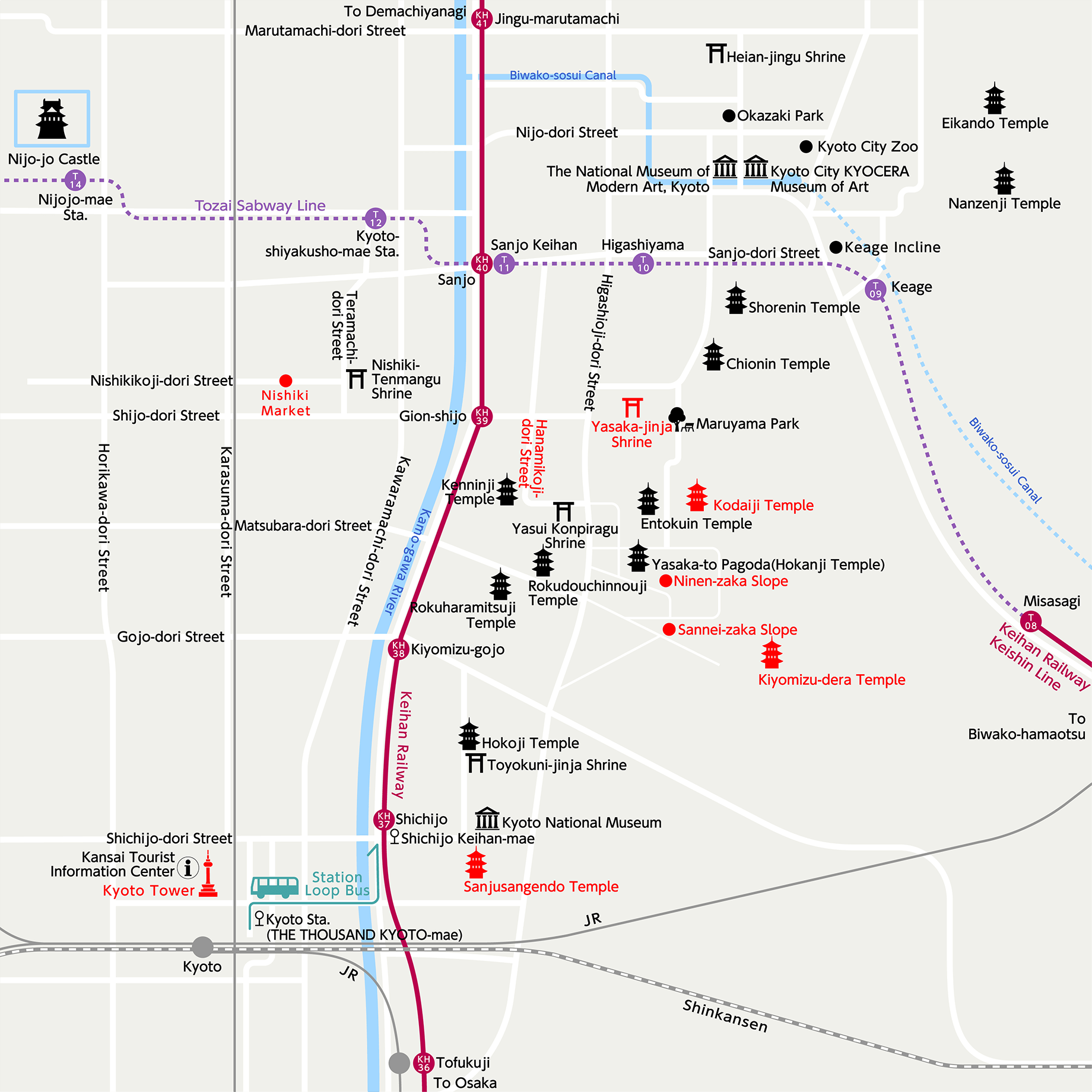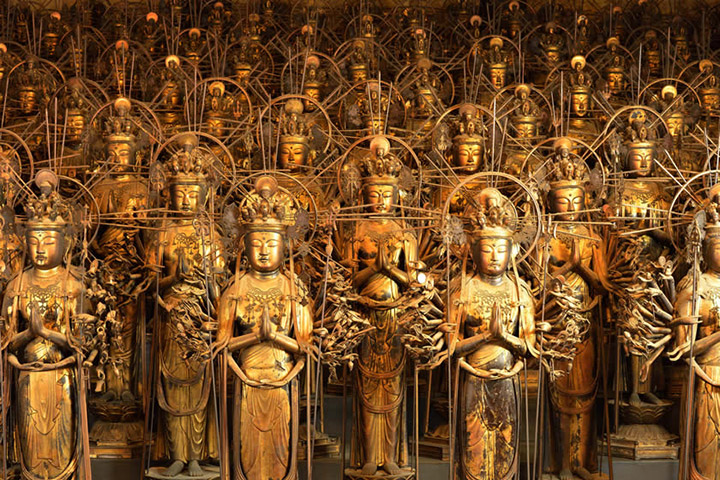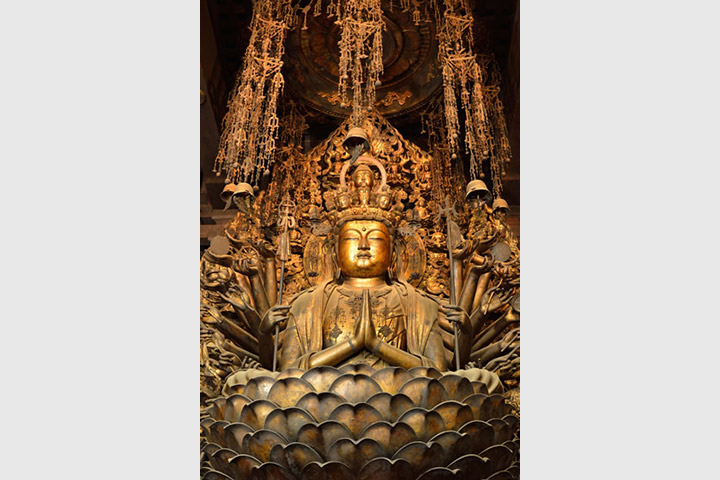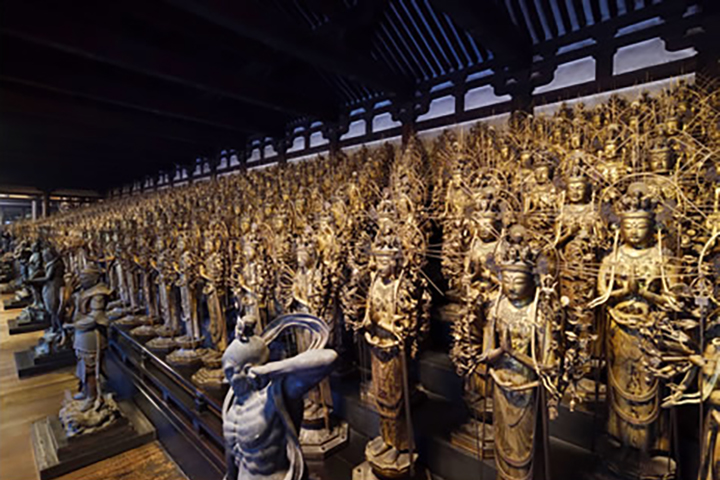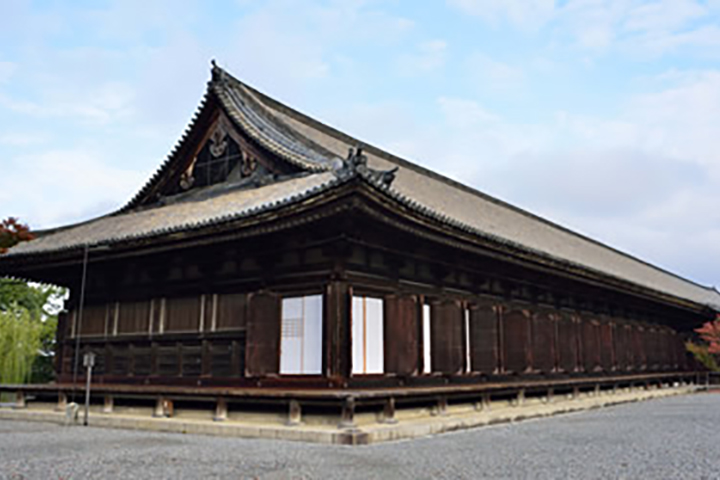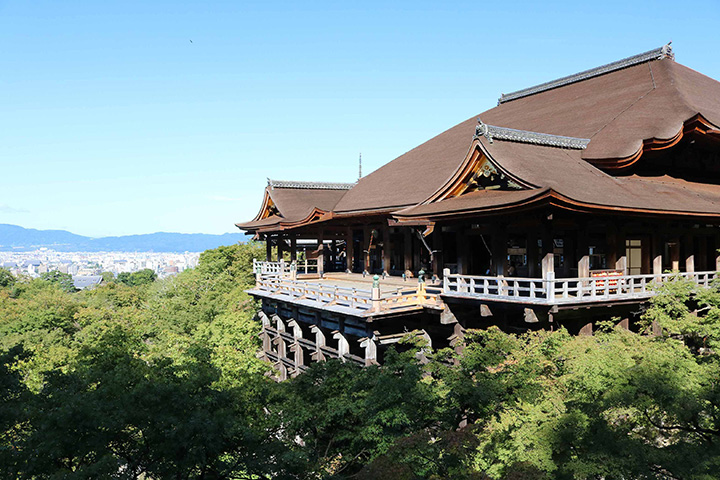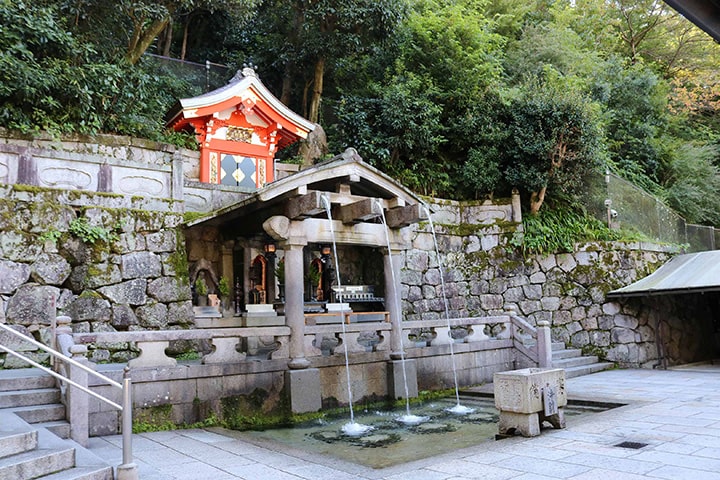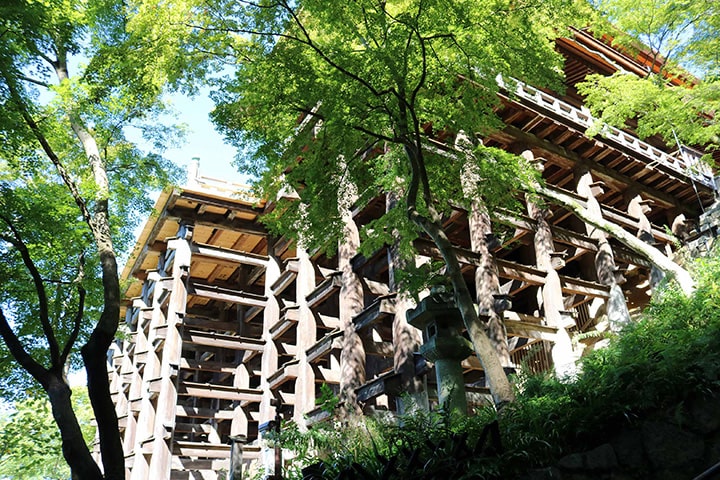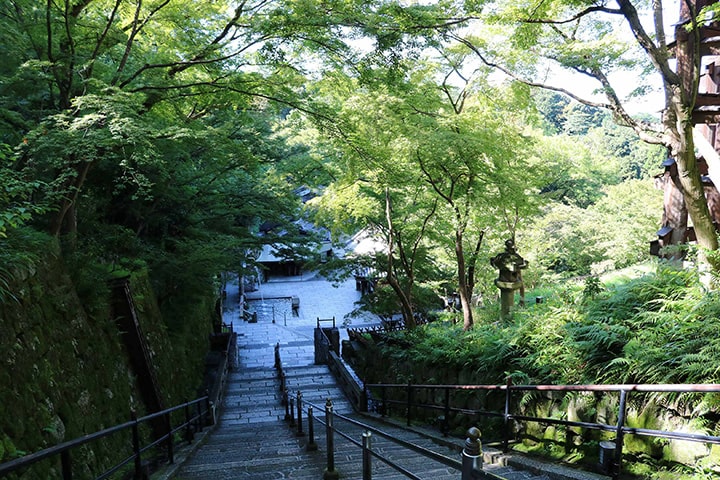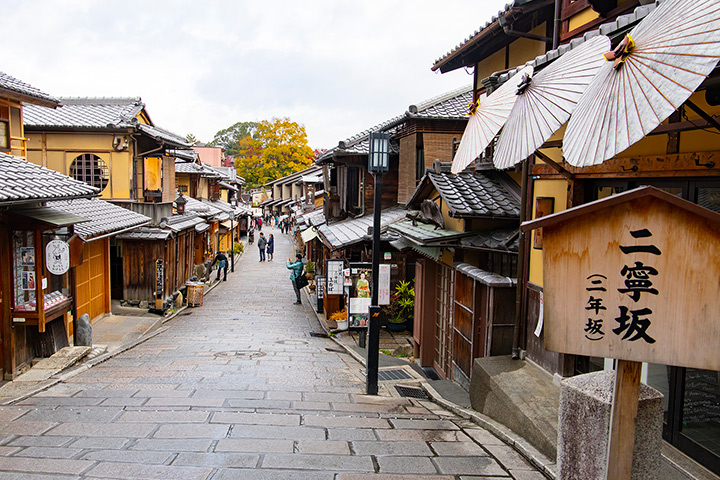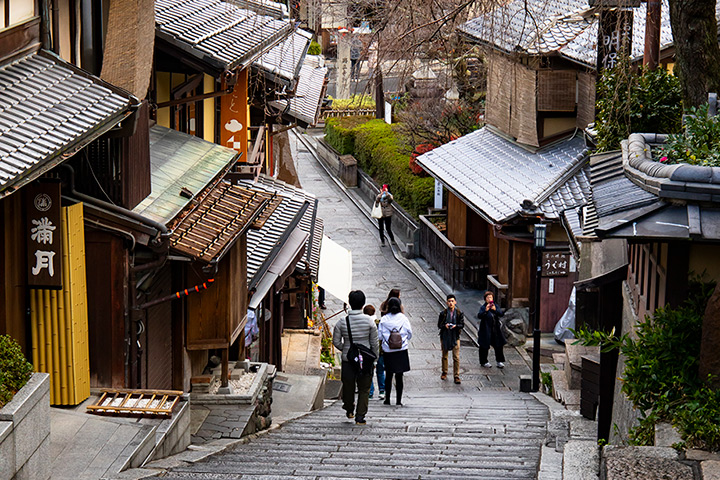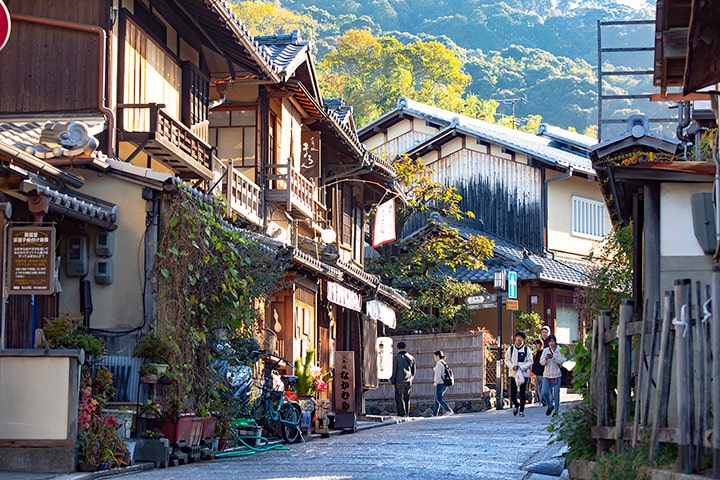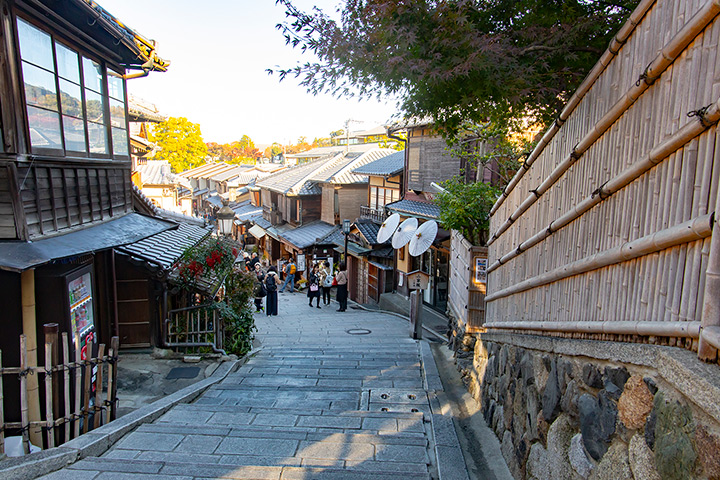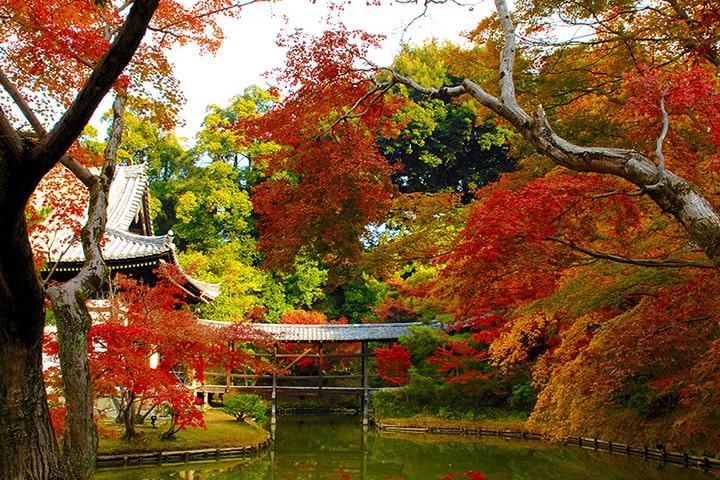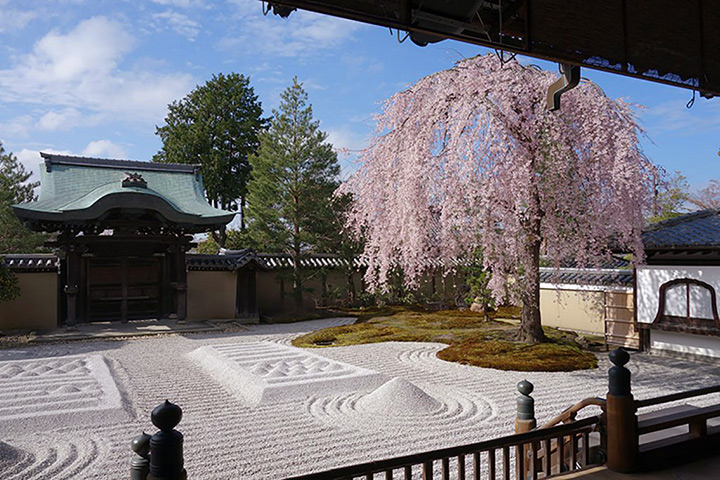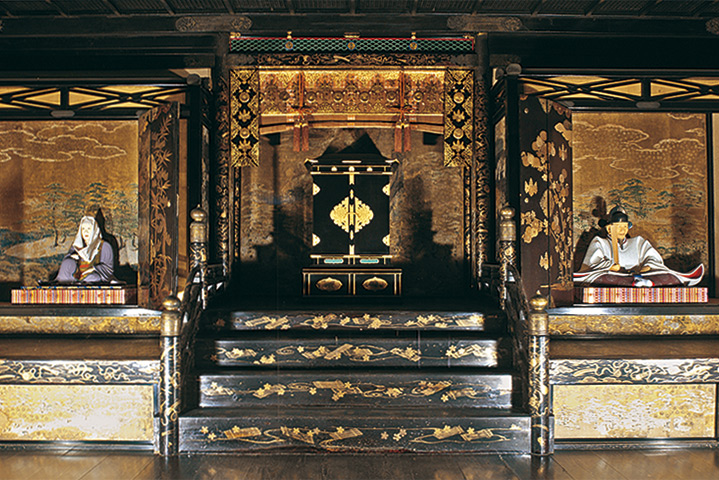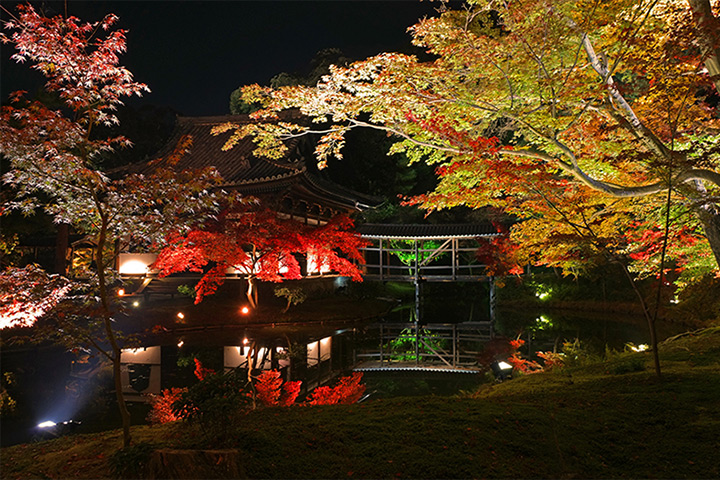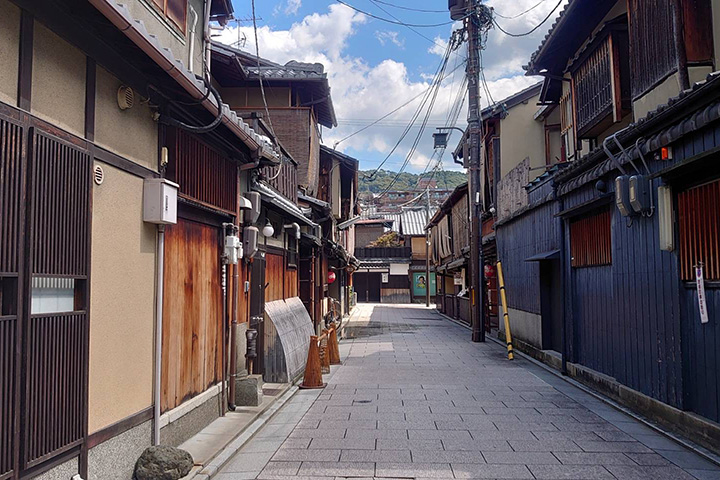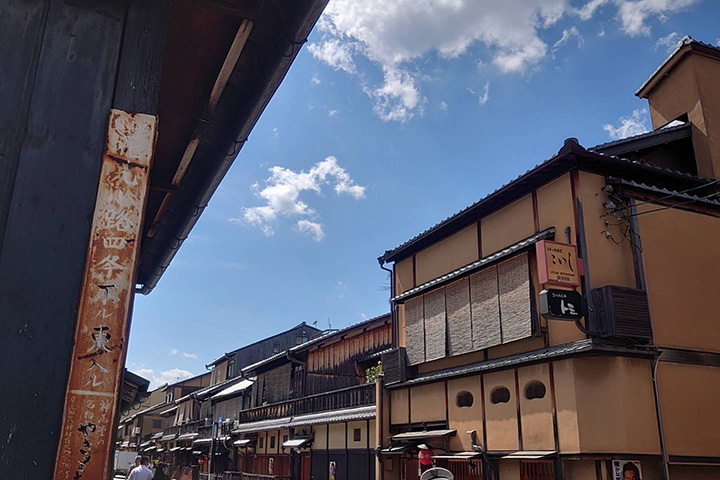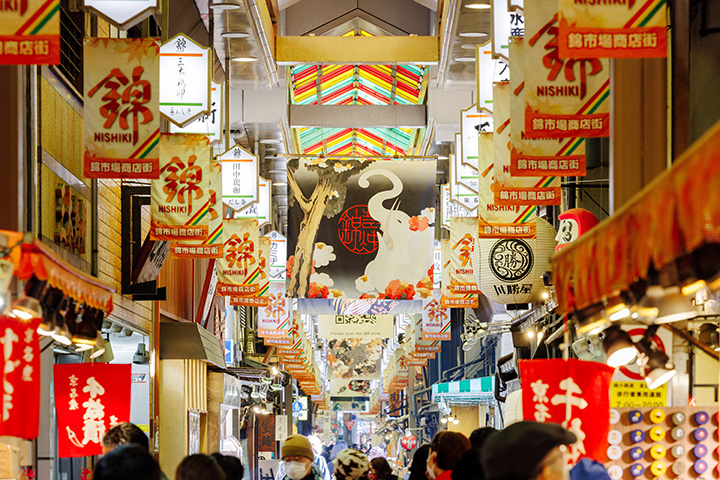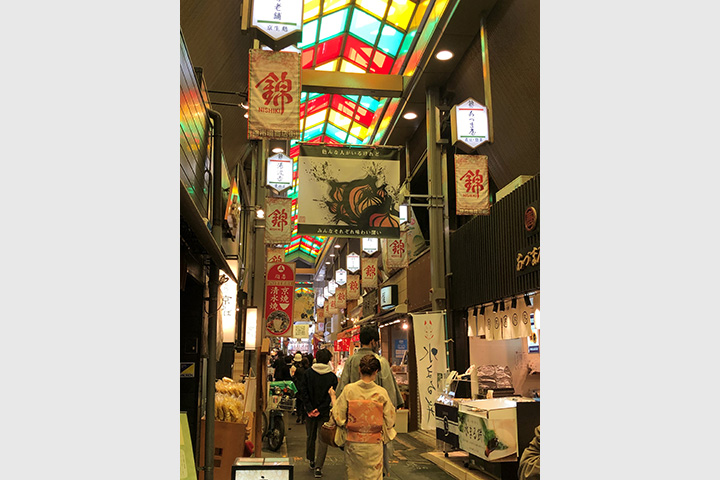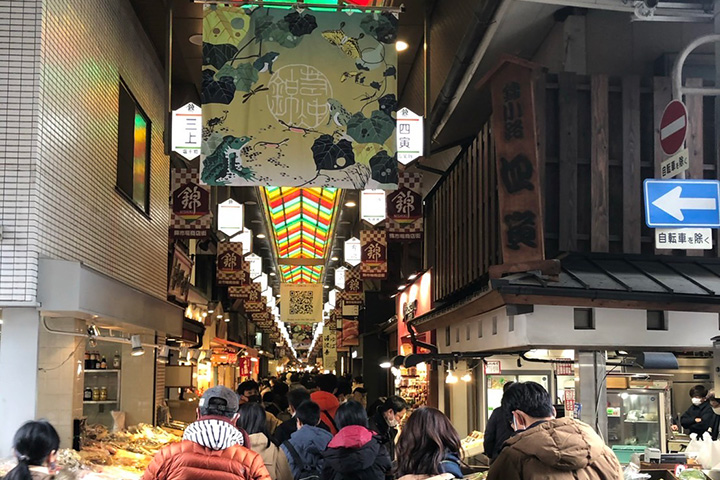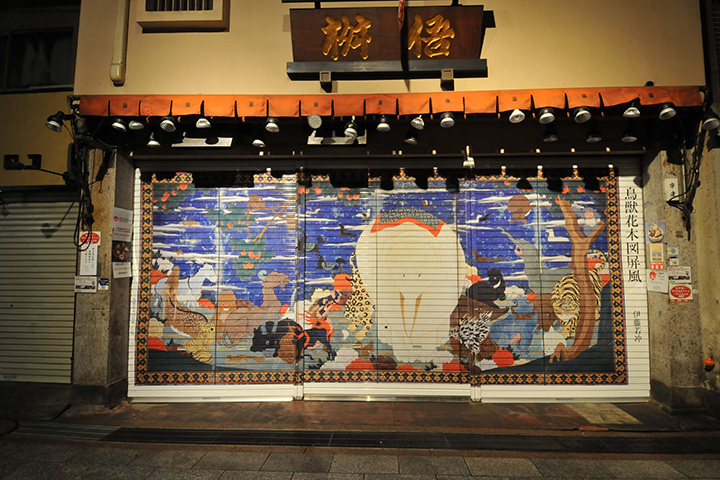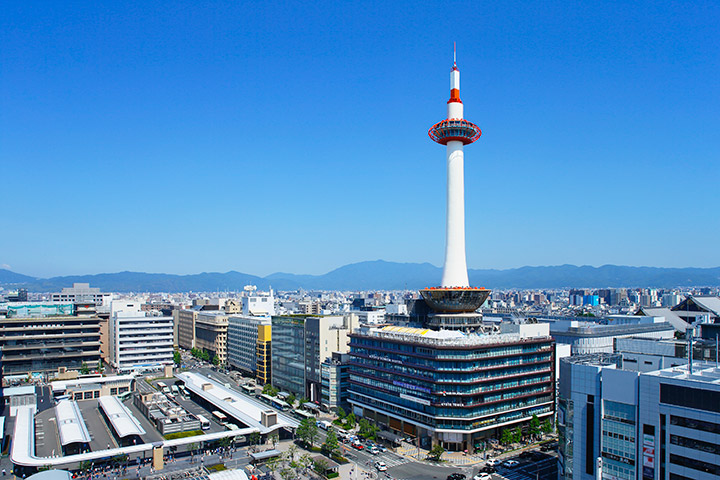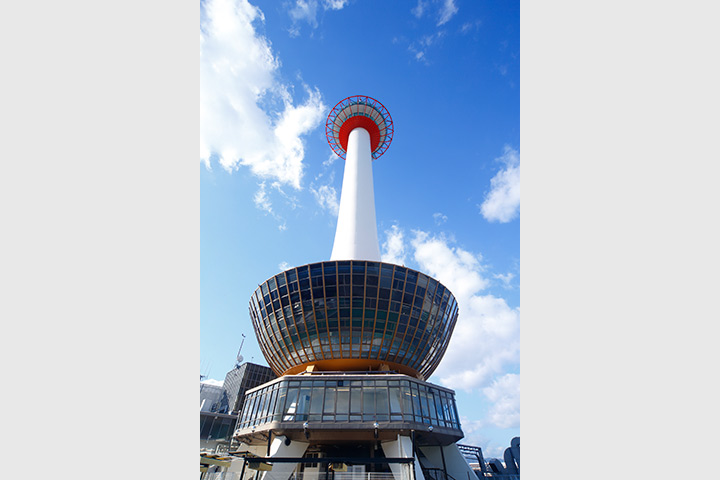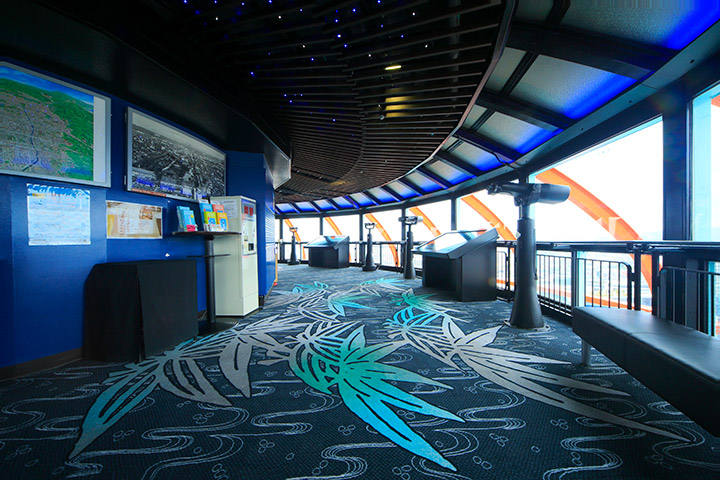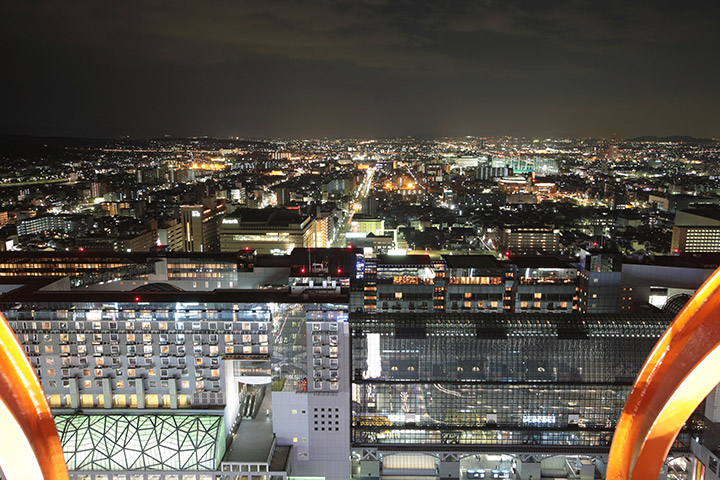The Higashiyama area often comes to mind as the area most reminiscent of Kyoto for first-time visitors to Kyoto. Visit Kiyomizu Temple, a UNESCO World Heritage Site, and indulge in Japan's culinary culture at Nishiki Market and Gion. You can immerse yourself in the atmosphere of Japan's ancient capital for the entire day.
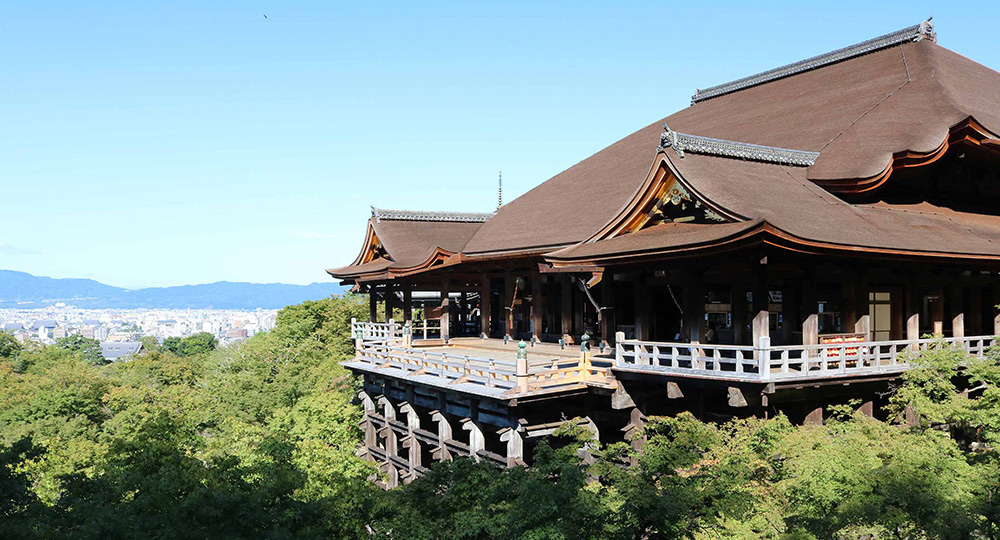
Travel Schedule
Business hours are subject to change, and you are advised to check the official website before visiting.
-
 Kyoto Station
Kyoto Station

-
8:30 Depart from JR Kyoto Station
Station Loop Bus (10 minutes)
Keihan Shichijo Station10 minutes on foot
-
-
Sanjusangen-do Temple (Rengeo-in Temple)
The main hall of this temple, which extends 120 m (393.7 ft) north-to-south, with a depth of 22 m (72.2 ft), contains one seated figure of Senju-Kannon (a Buddhist saint of infinite mercy, who grants people salvation with her one thousand arms and eyes) measuring jo-roku (4.8 m / 15.7 ft) in height created by Buddhist sculptor Tankei, and rows of 1000 life-sized standing figures of Senju-Kannon (created in the 12th to 13th centuries). The spectacle of these statues, surrounded by statues of the wind god, Fujin, and the thunder god, Raijin, and the Nijuhachibushu (28 gods who protect the believers of Kannon) is simply overwhelming. All the Buddhist figures in the hall (1,032 of them) have been designated National Treasures.
- Address:
- 657 Sanjusangen-do Umawari-cho, Higashiyama-ku, Kyoto, Kyoto Prefecture
- Hours:
- 8:30 a.m. to 5:00 p.m.
(9:00 a.m. to 4:00 p.m. between Mid-November and March).
Admission ends 30 minutes before closing time.
- URL:
http://sanjusangendo.jp/ - Japanese

-
20 minutes on foot
-
-
Kiyomizu-dera Temple
A UNESCO World Heritage Site. The main building, generally referred to as the "Kiyomizu stage," was rebuilt in 1633.
Rising 13 meters, the Kiyomizu-dera stage was built of wood without the use of a single nail. In Japan, the expression "jump off the stage of Kiyomizu" is equivalent to the English "take the plunge" when doing something with absolute resolve.- Address:
- 1-294 Kiyomizu, Higashiyama-ku, Kyoto, Kyoto Prefecture

-
5 minutes on foot
-
-
Strolling along Ninen-Zaka and Sannen-Zaka
The areas near Kiyomizu-dera Temple known as Ninen-zaka and Sannen-zaka are together designated as an Important Preservation District for Groups of Traditional Buildings. The old buildings and street paved with flagstones make for an excellent stroll to enjoy the atmosphere of the old capital. With souvenir shops and restaurants along the way, Ninen-zaka and Sannen-zaka are always filled with many tourists.
- Address:
- 2 Kiyomizu, Masuyama-cho , Higashiyama-ku, Kyoto
-
-
Lunch

-
A short walk away
-
-
Kodai-ji Temple
Kodai-ji was built in 1606 by the widow of Toyotomi Hideyoshi (often known by the title Kita no Mandokoro) to honor the soul of her late husband. Toyotomi Hideyoshi is the second warlord to successfully unify Japan.
The special mausoleum enshrines Hideyoshi and Kita no Mandokoro. The room interiors feature impressive gold-lacquered art that is famous in Japan. Several of the temple buildings are designated as Important Cultural Properties of Japan.- Address:
- 526 Shimokawara-cho, Higashiyama-ku, Kyoto

-
15 minutes on foot
-
-
Hanami-koji Street
The Gion area is filled with teahouses and restaurants built in the machiya style. At certain times of the day, geisha and maiko can be seen heading to their engagements. The unique atmosphere of Gion is particularly strong along Hanami-koji Street and the Shirakawa River.
- Address:
- Gion, Higashiyama-ku, Kyoto

-
10 minutes on foot
-
-
Stroll at Nishiki Market
Called "Kyoto's kitchen," Nishiki Market is a bustling area in the Shijo area of Kyoto, crammed with shops on both sides of the narrow street selling meats, vegetables and other fresh foods, along with a wide range of other daily necessities. The market is filled with energy all day long. Nishiki Market is frequented by professional chefs and locals in addition to the large number of tourists.
- Address:
- Nishiki Koji-dori Tera-machi Nishi-iru or Nishiki Koji-dori Takakura Higashi-iru, Nakagyo-ku, Kyoto
- URL:
http://www.kyoto-nishiki.or.jp/ - Japanese
-

 Kyoto Station
Kyoto Station
-
10 minutes on foot
Keihan Gion-shijo Station (2 minutes) – Keihan Shichijo Station
Station Loop Bus (5 minutes)
Kyoto Station
-
- In The Area
-
Nidec Kyoto Tower
Nidec Kyoto Tower is a symbol of Kyoto, rising high across the street from Kyoto Station. The tallest structure in Kyoto, the tower gives a beautiful view of the entire town in all directions.
Various local stores are located from B1-B3. There is also a special counter for foreigners visiting Japan on the 3rd floor, where you can also buy tickets.- Address:
- 721-1 Higashishiokoji-cho, Karasuma-dori Shichijo-sagaru, Shimogyo-ku, Kyoto (Next to JR Kyoto Station)
Area Map
